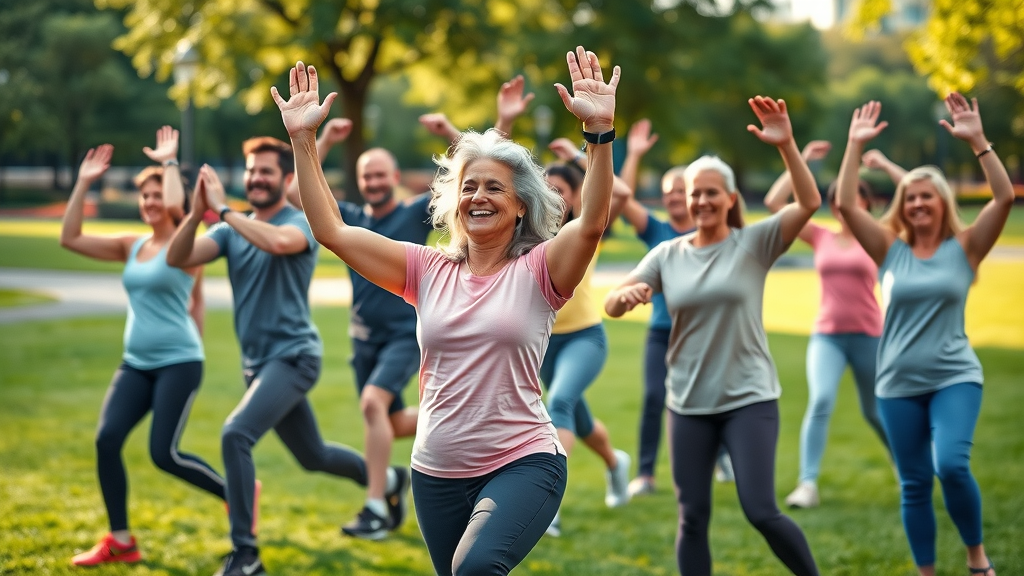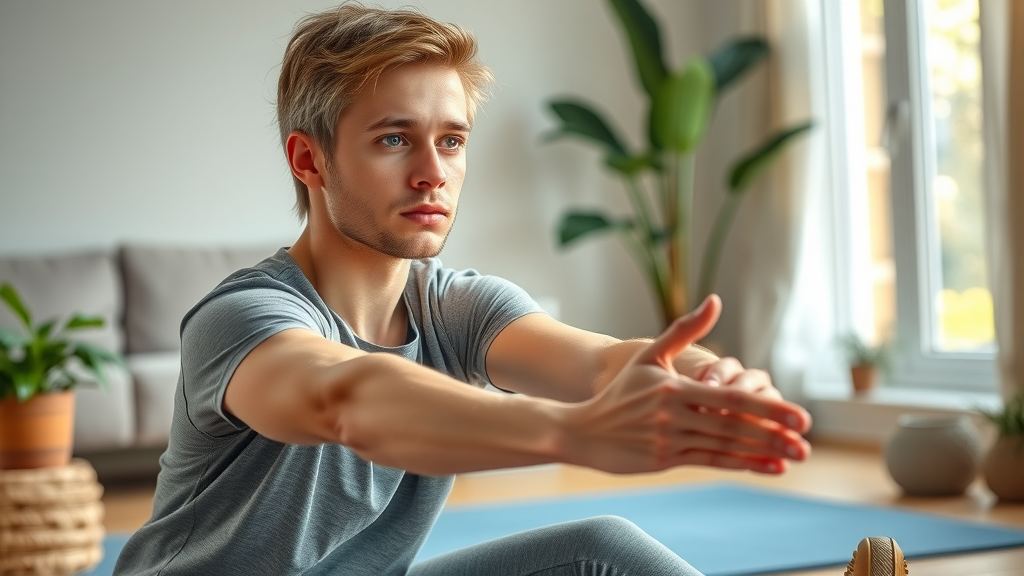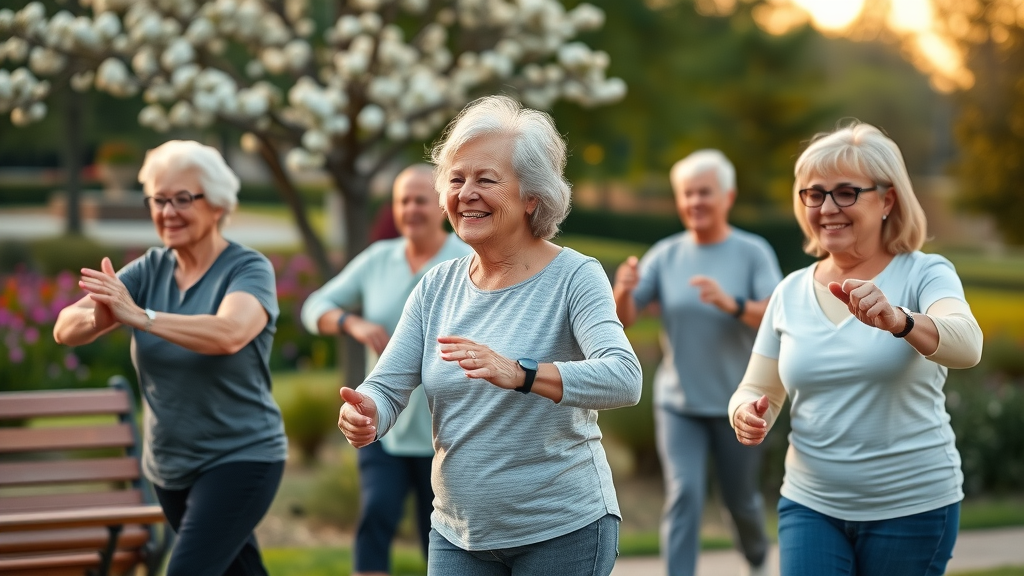Did you know: Sedentary behaviour has quietly become one of the leading risk factors for chronic conditions and decreased energy levels in every age group—but incorporating fitness and recreation activities can supercharge your vitality and dramatically improve your quality of life! Whether you’re spending long periods behind a desk or simply missing out on meaningful movement, understanding the transformative power of physical activity is crucial. In this comprehensive guide, you’ll uncover the science, practical steps, and real-life stories behind using fitness and recreation activities to boost energy, invigorate your routine, and enhance your well-being—no matter your age.

Why Fitness and Recreation Activities Matter: Surprising Insights Into Physical Activity
The importance of fitness and recreation activities goes far beyond just burning calories—it’s about creating a sustainable, energized lifestyle. As physical inactivity increases worldwide, more people than ever before are experiencing fatigue, poor health outcomes, and even a reduced lifespan. Surprisingly, inactivity for as little as a few hours each day can have a significant impact on your energy, especially if you’re sitting for long periods at work, in school, or at home. Every age group, including children, adults, and older adults, can benefit from moving more and sitting less.
Perhaps the most critical insight is that being physically active isn’t only about structured exercise; it’s about integrating movement into daily life. Everyday activities, from carrying groceries to playing with your kids or taking a brisk walk, all contribute positively to your well-being. Studies show that increasing your physical activity and reducing sedentary behaviour lowers your risk of chronic conditions like heart disease, diabetes, and obesity. Physical inactivity is recognized as a leading risk factor globally, making it essential to tackle for every age group and lifestyle.
A Startling Look: How Sedentary Behaviour is Quietly Draining Your Energy
It’s easy to overlook the cumulative impact of daily inactivity. Sedentary behaviour —defined as any waking activity with little energy expenditure, such as sitting or reclining—contributes to fatigue, weight gain, and the development of chronic conditions. When you’re inactive for long periods, your muscles weaken, your circulation slows, and your body becomes less efficient at converting food into energy. Over time, this leads to a noticeable drop in your vitality, diminished muscle strength , and more frequent feelings of sluggishness.
In fact, research has linked excessive inactivity to heightened risk factors for obesity, cardiovascular disease, and even mental health challenges such as anxiety and depression. The good news? Even modest changes in your routine—like standing while on phone calls, choosing to walk instead of drive for short trips, and engaging in purposeful fitness activities —can reverse these negative effects. Overcoming sedentary habits is the first and most vital step toward a more energized lifestyle.
"People who engage in regular fitness and recreation activities can increase their energy levels by up to 20%, according to leading health institutions."
Core Fitness and Recreation Activities for Enhanced Physical Activity
Finding the right fitness and recreation activities for your lifestyle is the key to unlocking lasting energy boosts and better health outcomes. From low-impact gentle exercise to high-intensity sports, there’s an activity for every age group and ability level. It’s crucial to choose activities that you enjoy, ensuring you’ll stay motivated and consistent. Popular options include brisk walking, cycling, swimming, yoga, and team sports, all of which contribute to a stronger heart, increased muscle strength, and greater flexibility and range of motion.
A balanced approach incorporates a mix of aerobic exercise, strength training, flexibility exercises, and recreational sports. Not only do these improve quality of life and physical well-being, but they also enhance mental health and social connections. Activities such as dancing, hiking, community team games, and even gardening can all be effective tools to combat physical inactivity for children, adults, and older adults alike.
- Walking or hiking in nature
- Swimming, water aerobics, or water-based recreation
- Cycling (indoor or outdoor)
- Participating in group fitness classes (yoga, pilates, Zumba)
- Outdoor team sports (soccer, basketball, tennis)
- Dancing and movement-based recreation
- Strength training and resistance exercises
- Tai Chi or gentle stretching routines
- Gardening and yard work
- Active play with children or pets
| Activity | Intensity | Accessibility | Key Health Benefits |
|---|---|---|---|
| Brisk Walking | Moderate | High (Minimal Equipment Required) | Heart health, weight management, improved mood |
| Cycling | Moderate to High | Medium (Requires Bicycle) | Lower body strength, joint mobility, cardiovascular fitness |
| Swimming | Moderate | Medium (Access to Pool Needed) | Low-impact, whole-body toning, improved lung capacity |
| Yoga | Low to Moderate | High (Minimal Space & Mat) | Flexibility, stress relief, balance |
| Strength Training | Moderate to High | Medium (Weights or Bands) | Muscle strength, bone density, metabolic boost |
| Recreational Sports | Varies | Medium (Facilities/Teams Needed) | Coordination, teamwork, social + mental health |
| Gardening | Low to Moderate | High | Mobility, light resistance, mental relaxation |

How Fitness and Recreation Activities Improve Quality of Life
Engaging in regular fitness and recreation activities is one of the most powerful strategies for improving quality of life at any age. Not only do these activities sharpen your physical health by boosting heart function, building stronger muscles, and maintaining a healthy weight, but they also deliver profound mental health benefits. Studies highlight that being physically active lowers your risk factors for depression and anxiety, helps manage stress, and creates a sense of accomplishment and joy.
Modern research shows that even small increments of physical activity can yield substantial health benefits. Improved sleep, elevated energy levels, and greater independence—especially for older adults—are just a few of the rewards. By interacting with others in recreational settings, you’ll also foster social ties and community belonging, both of which are vital for a high quality of life and emotional well-being.
Addressing Physical Inactivity: Essential Steps for All Ages
Tackling physical inactivity requires a multi-pronged approach, as every age group has unique barriers and needs. For many, the greatest challenge is simply getting started—especially for older adults or those with chronic conditions. Health experts recommend shifting your environment to encourage more movement: use reminders to stand up, move during commercial breaks, or schedule short walks into your day. Schools and workplaces are also key settings to reduce inactivity, with programs to promote active breaks and group activities.
Family and community support is essential. Invite friends or loved ones to join you in new physical activities , or enroll in local recreation center programs tailored to different age groups. For older adults, even gentle activity increases range of motion and contributes to fall prevention. The bottom line? Every step counts—start by identifying why you want to become more active and celebrate every milestone, no matter how small, on your path to a healthier lifestyle.
Physical Activity Guidelines for Children, Adults, and Older Adults
Current health guidelines are designed to help every age group get the most out of fitness and recreation activities :
- Children (6-17 years): At least 60 minutes of moderate-to-vigorous activity daily, incorporating aerobic, muscle strengthening, and bone-strengthening exercises.
- Adults (18-64 years): Aim for at least 150 minutes of moderate aerobic activity (like brisk walking or cycling) each week, along with muscle strengthening or resistance training activities on 2 or more days a week.
- Older Adults (65+): Follow adult recommendations as ability allows, adding balance activities to prevent falls and preserve independence. Even everyday activities like carrying groceries count!
Always consult your doctor before starting a new exercise routine, especially if you have chronic conditions or are taking medications that affect physical performance.
Becoming Physically Active: Tips to Break Sedentary Behaviour with Fitness and Recreation Activities
Overcoming sedentary behaviour starts with practical, small changes. Begin by identifying the amount of time you currently spend sitting, then challenge yourself to break it up with brief periods of movement. If you’re new to fitness and recreation activities , start with enjoyable options like stretching, walking, or gentle yoga at home. Gradually increase both intensity and duration as you build confidence and stronger muscles.
Setting specific and achievable goals—such as walking 15 minutes daily, standing during meetings, or using a fitness app to track steps—can make physical activity a seamless part of your routine. Remember, variety is vital; mixing up your activities keeps things interesting and uses different muscle groups for optimal results. Invite family and friends to join you for walks, games, or dance breaks, transforming solitary exercise into social fun that supports lasting motivation.

Fitness and Recreation Activities Tailored for Older Adults
Older adults often face unique challenges when it comes to staying active, such as limited mobility, chronic conditions, or fear of injury. However, movement at any intensity level delivers immense benefits—including better range of motion, stronger muscles, improved mental health, and reduced risk factors for falls or chronic illness. Fitness and recreation activities specifically adapted for older adults can include low-impact classes, aquatic fitness, and community walking groups, all designed to keep you moving safely and joyfully.
The key is to choose activities you enjoy and that suit your physical abilities. Consider group sessions that combine gentle strength training, stretching, and balance work. Many local recreation centers offer age-appropriate programs, while simple home routines (like chair exercises or resistance band workouts) are easily accessible and effective. Always consult your doctor before beginning a new routine, especially when managing chronic conditions.
Safe and Enjoyable Physical Activity Examples for Older Adults
Safe movement helps older adults retain independence, maintain social connections, and experience the full range of health benefits from regular activity. Examples include:
- Walking with friends at a comfortable pace
- Water aerobics or swimming for low-joint impact
- Chair yoga or Tai Chi for gentle strength, flexibility, and balance
- Gardening or light yard work, which incorporate resistance training
- Carrying light groceries or household chores that challenge muscle groups
- Stretching routines to increase range of motion
- Group dance, music-based movement, or community sports leagues adapted for older adults

"Regular movement—no matter your age—adds years to your life and life to your years."
Making Fitness and Recreation Activities a Habit: Overcoming Common Barriers
Building lasting habits around fitness and recreation activities requires tackling common barriers such as lack of time, motivation, or resources. The first step is to recognize the value of even brief activity increases throughout your day—every minute counts, and small efforts add up over months and years. By planning your workouts in advance, scheduling them as appointments, and choosing activities you genuinely enjoy, you’ll make it easier to remain consistent over the long term.
Social support, goal-setting, and rewarding progress are proven strategies for sustaining positive change. Connecting with fitness partners, joining local clubs, or tracking your improvements can spark fresh enthusiasm and accountability. Adapt your approach as seasons or circumstances change—if bad weather or a busy period interrupts your outdoor walks, try online classes or at-home routines instead.
- Set aside dedicated times in your calendar for activity
- Start small and increase gradually to avoid burnout
- Make it social—exercise with friends, family, or groups
- Celebrate milestones and progress, not just big results
- Use reminders or digital trackers to encourage consistency
- Keep workout gear visible and ready to use at home
- Mix up your routine to stay challenged and engaged

Real Stories: Fitness and Recreation Activities That Changed Lives
Every journey to greater vitality through fitness and recreation activities is unique, but the results are universal—more energy, increased social interaction, and improved health outcomes. Take, for example, a middle-aged office worker who began taking lunchtime walks and weekend bike rides, gradually increasing activity until chronic back pain and fatigue diminished. Or the older adult who joined a water aerobics group after retirement, finding renewed joy in old friendships and a surprising boost in balance and strength.
Children and teens who participate in team sports or after-school programs often report higher self-esteem and stronger academic performance, thanks to the cognitive and emotional benefits of regular movement. Across every age group, people who proactively address sedentary behaviour discover a new sense of purpose and well-being. If you’re ready for the same transformation, it’s never too late to begin!
Case Studies: Boosting Energy and Quality of Life With Physical Activity
Consider an older adult diagnosed with a chronic condition who replaced daily inactivity with regular chair yoga and short walks in the garden. Over time, this led to reduced symptoms, fewer health complications, and restored independence. Another case: a young mother found renewed energy through weekend family hikes, inspiring healthier habits for her children in the process.
These real-world successes confirm what research shows: physical activity increases stamina, resilience, and mental alertness, regardless of starting level. Quality of life improvements are felt quickly as aches fade, moods lift, and new friendships form in group recreation settings. With steady, enjoyable change, lasting health is truly within reach.
People Also Ask: Fitness and Recreation Activities FAQ
What are 5 fitness activities?
- Brisk walking
- Swimming
- Bicycling
- Yoga or Pilates
- Strength training (using weights or resistance bands)
These fitness activities can fit into almost any routine and are easily adapted for all levels and age groups.
What are examples of recreation activities?
- Dancing
- Recreational sports (e.g., volleyball, tennis, soccer)
- Group fitness classes
- Gardening or nature walks
- Playing with pets or children
- Community events and games
- Bowling or mini-golf
- Picnics with active play
Recreation activities are versatile and can be enjoyed by every age group, making them a fun way to stay active and socialize.
What is recreational fitness?
Recreational fitness refers to physical activity or exercise performed primarily for enjoyment, relaxation, and social engagement rather than to achieve high-level athletic performance. It includes any activity that gets you moving and elevates your heart rate, such as group fitness classes, dancing, hiking, or playing sports for fun. The main goal is to improve quality of life and well-being in an enjoyable, sustainable way.
What are 10 examples of physical activities?
- Walking
- Swimming
- Cycling
- Jogging
- Yoga
- Pilates
- Playing soccer or basketball
- Tennis
- Strength training (weights, resistance bands)
- Gardening
Incorporating a variety of these activities ensures you target different muscle groups, keep things interesting, and maximize physical health benefits.
Practical Advice and Safety: Making the Most of Fitness and Recreation Activities
- Warm up before and cool down after activity to reduce injury risk
- Stay hydrated and wear appropriate gear
- Listen to your body—modify activities if you feel pain or discomfort
- Increase intensity and duration gradually
- Use protective equipment in sports where needed
- Consult your doctor if you have chronic conditions or are new to exercise
Prioritizing safety ensures that your fitness and recreation activities remain enjoyable and effective. Taking the right precautions allows you to maximize health benefits for every age group while mitigating risk factors and supporting lasting change.
Key Steps to Sustain Physical Activity and Prevent Sedentary Behaviour
- Integrate activity into daily routines (walk to the store, take stairs, stretch during breaks)
- Create small, clear goals and track your progress
- Reward yourself for improvements
- Vary your activities to prevent boredom and target different muscle groups
- Connect with others to build accountability and a sense of community
- Replace one sedentary habit (e.g., evening TV) with a fun physical activity
Building solid habits around fitness and recreation activities is the foundation for lifelong vitality. Adapt these tips to fit your lifestyle, and watch as your energy, mood, and wellness thrive.
Final Thoughts: Transform Your Energy With Fitness and Recreation Activities
Start today—choose one new fitness or recreation activity and discover the joy and energy you’ve been missing. Share your success tips as a guest expert on my podcast and in my book. Go here to learn more: https://wealthywomaneveryday.com/spotlight
Incorporating diverse fitness and recreation activities into your routine can significantly enhance your energy levels and overall well-being. For instance, engaging in team sports like soccer, basketball, or volleyball not only provides cardiovascular exercise and agility training but also fosters teamwork and social connections. Participating in such activities can improve physical fitness while building camaraderie among players. ( downbeach.com )
Additionally, exploring outdoor recreational activities such as kayaking, paddleboarding, or skiing offers opportunities to connect with nature while improving physical fitness. These activities provide a refreshing and invigorating way to stay active, allowing you to disconnect from daily stressors and appreciate the natural environment. ( downbeach.com )
If you’re serious about boosting your energy and enhancing your quality of life, these resources offer valuable insights into incorporating enjoyable and effective fitness and recreation activities into your daily routine.
 Add Row
Add Row  Add
Add 




Write A Comment